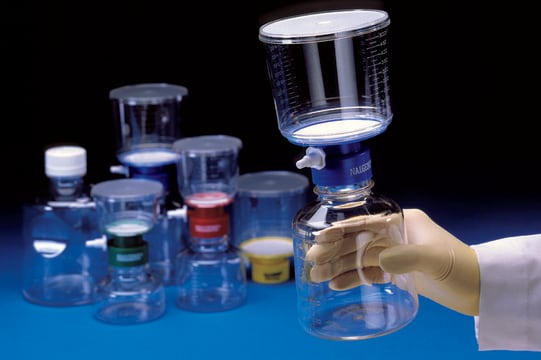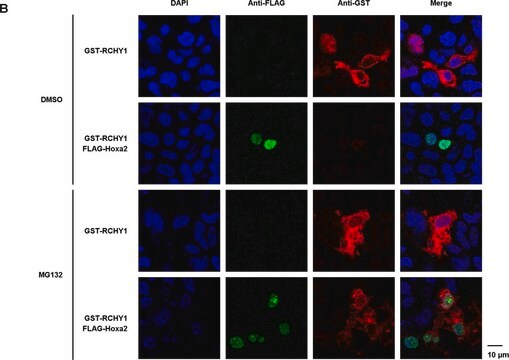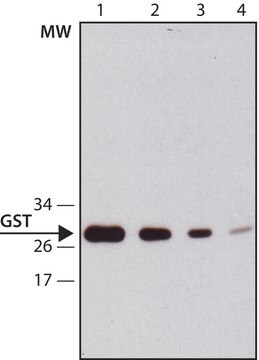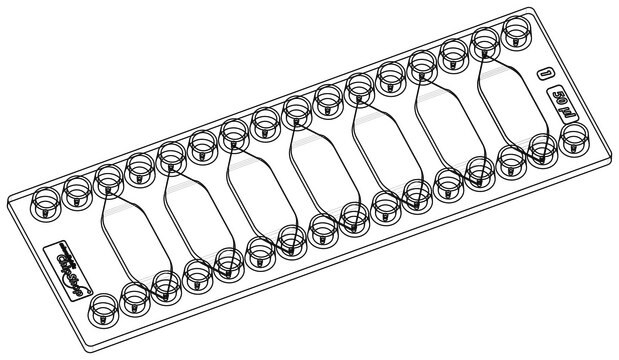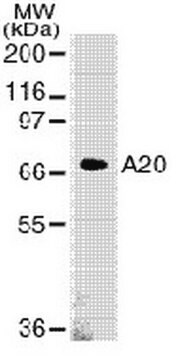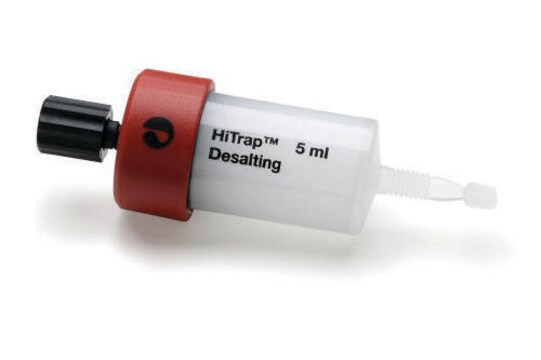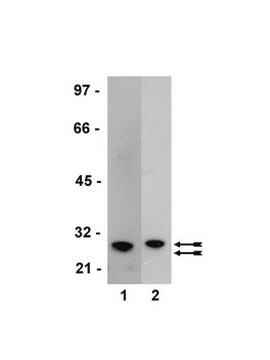AB3282
Anti-Glutathione-S-Transferase Antibody, S. japonicum form
Chemicon®, from rabbit
Synonyme(s) :
GST-tag
About This Item
Produits recommandés
Source biologique
rabbit
Niveau de qualité
Forme d'anticorps
purified antibody
Type de produit anticorps
primary antibodies
Clone
polyclonal
Espèces réactives
Schistosoma japonicum, vertebrates
Fabricant/nom de marque
Chemicon®
Technique(s)
ELISA: suitable
western blot: suitable
Numéro d'accès NCBI
Numéro d'accès UniProt
Conditions d'expédition
wet ice
Modification post-traductionnelle de la cible
unmodified
Informations sur le gène
human ... GSTP1(2950)
Spécificité
The anti GST antibody reacts specifically with the glutathione S-transferase moiety of GST fusion proteins as expressed in E.coli by the pGEX (1) vectors and in yeast by the pYEX(TM) vectors (2).
(1)The pGEX expression vector system is a plasmid and purification system which, in most cases, results in the fusion protein being soluble in aqueous solutions for extraction and purification from crude bacterial lysates. This expression vector system enables the protein glutathione S-transferase (GST) to be produced in fusion with the protein of interest so as to bind with high affinity to a glutathione affinity column. The GST-protein complex can then be easily purified by elution from the column with reduced glutathione. The pGEX vectors are available as the GST System from Pharmacia Biotech.
(2) pYEX is a yeast GST expression vector supplied by AMRAD biotech of Australia.
Immunogène
Application
Epitope Tags & General Use
Epitope Tags
Forme physique
Stockage et stabilité
Informations légales
Clause de non-responsabilité
Vous ne trouvez pas le bon produit ?
Essayez notre Outil de sélection de produits.
Code de la classe de stockage
12 - Non Combustible Liquids
Classe de danger pour l'eau (WGK)
WGK 2
Point d'éclair (°F)
Not applicable
Point d'éclair (°C)
Not applicable
Certificats d'analyse (COA)
Recherchez un Certificats d'analyse (COA) en saisissant le numéro de lot du produit. Les numéros de lot figurent sur l'étiquette du produit après les mots "Lot" ou "Batch".
Déjà en possession de ce produit ?
Retrouvez la documentation relative aux produits que vous avez récemment achetés dans la Bibliothèque de documents.
Notre équipe de scientifiques dispose d'une expérience dans tous les secteurs de la recherche, notamment en sciences de la vie, science des matériaux, synthèse chimique, chromatographie, analyse et dans de nombreux autres domaines..
Contacter notre Service technique